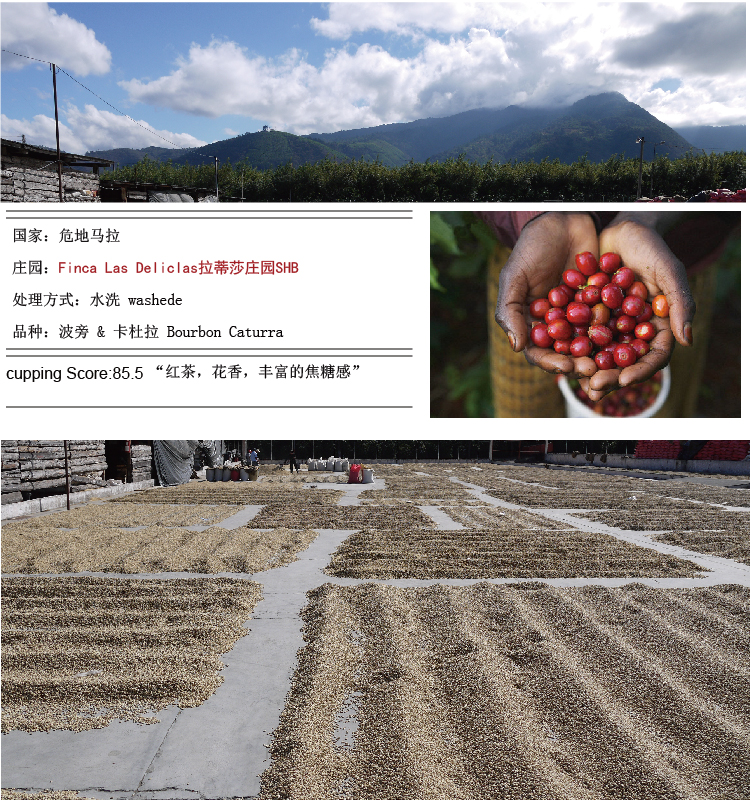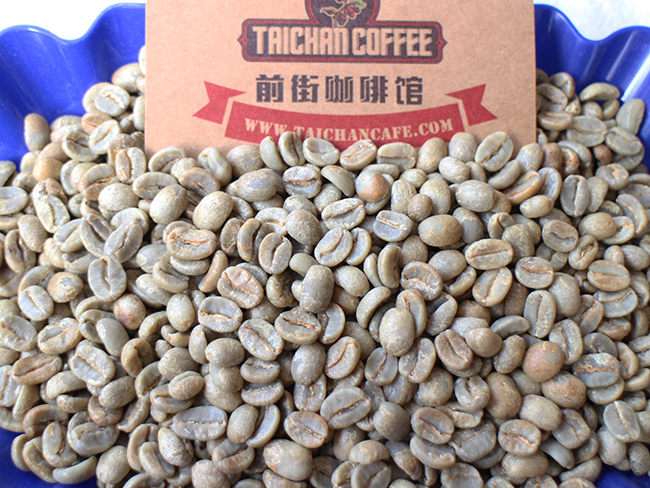What kind of raw beans are high-quality raw beans? How to choose raw coffee beans? Costa Rican Jingsheng
What kind of raw beans are high-quality raw beans? First look at the surface of beans, fresh and high-quality raw beans, the surface is shiny, in addition, the processing of good raw beans, uniform color, the surface of uneven color can not be called good beans, must choose uniform color. Secondly, the particle size is the same, which is also evidence of good quality management. Make sure that the particle size is the same when you buy it. Even and neat coffee raw beans can achieve a consistent baking effect; otherwise, some are too deep and bitter, and some are too shallow and sour, which will affect the overall taste of roasted coffee beans. Raw beans are divided into several grades according to quality standards, which vary from place to place, basically according to size and shape. The higher the grade, the better the quality. At present, as the domestic coffee raw bean market has just started, the coffee raw beans sold are mainly low-grade futures beans. People usually have a lot of defects in the raw beans they get. Defective coffee beans are quite harmful, including that the mutated beans are neither flat nor garden beans. Due to abnormal development, the raw beans are broken in the center when they are shelled. This kind of bean is prone to uneven baking. Fermented beans / black beans are fermented internally in the process of processing or washing. It has the smell of fermented acid. Unripe beans / white dead beans are harvested when the coffee fruit is not fully ripe. This kind of bean is ivory after baking and tastes green and astringent. The process of processing and transportation of mildew beans is affected by damp, rain and mold. As long as one bean is moldy, it will soon spread to others, so be careful. Worm-eaten beans are eaten by a pest called coffee bark beetle, and there are insect eyes on the beans, which make coffee smell. The dried fruit enters the drying process with the outer skin. In the non-washing process, the raw beans can be removed from the shell, but in the water washing process, this state becomes defective beans. Dissimilar beans such as robusta mixed in Arabica and flat beans mixed in garden beans. Small sand and gravel can easily damage the bean grinder and can be found in the more extensive sun. When selecting, we spread out the beans and put them in a place with plenty of light, and it is more efficient to pick them with both hands. Basically, coffee raw beans that look uncomfortable can be picked out. After choosing neat beans, the beans can be baked more neatly and tasted more pure. If you mix too many unexpected factors, it is impossible to judge the real taste of the coffee bean itself. General commercial grade of ordinary coffee raw beans, through their own selection, can also reach a very high and expensive level, or even the level of refined coffee. In terms of variety, not all Arabica beans are selected coffee, only a few high-end beans come from high mountain areas, or after strict selection and classification, they are considered selected coffee because of their hard texture, rich taste and excellent flavor. It only accounts for about 10% of the world's coffee production. As for Robusta beans, all of them have entered the commercial coffee market, and only a few fine beans can be regarded as selected coffee. From the perspective of coffee treatment: due to the different ripening time of coffee fruit, good coffee must be harvested by hand in 3 to 6 times, and care must be taken in the process of processing, whether it is tanning or washing. The raw coffee beans also have to go through strict selection and classification to ensure the stability of their quality. Although some areas have good local conditions and can produce excellent coffee, they cannot be classified as selected coffee if they are not handled properly or are just leftover inferior products. The American selected Coffee Association has published a selected coffee classification map (GreenCoffeeClassificationChart), which clearly and fully defines flawless raw beans and coffee with special flavor as selections. The selection of coffee is absolutely special, far exceeding the level that tastes good. From the perspective of roasting mode, there is a close relationship between the year, type, room temperature, moisture content and baking temperature of raw beans. Generally speaking, the selection of coffee usually uses a small amount of roasting (SmallBatch), which must be strictly tested and analyzed in advance, and then be looked after by the roaster until it is in the best condition before it can be stopped. To ensure that the coffee beans can be evenly ripe inside and outside, can ensure the perfect quality. Select coffee in terms of freshness: fresh coffee is selected coffee, which refers to the freshness of roasted beans, not the freshness of raw beans after harvest. After roasting, the flavor of coffee beans reaches its peak in about 1-7 days, which is the best time to drink; once stored for too long, the coffee will naturally decay and suffer oxidation, and the flavor will not be as good as it used to be. From the way coffee is sold: it is important that beans are fresh and the roasting date should be kept within 7 days in order to make a good coffee. In contrast, commercial coffee uses iron cans, glass cans or plastic bags to pack poor coffee beans, coffee powder, or instant coffee. From the perspective of the trade name, coffee: all good coffee has its own characteristics, and it is not willing to be incognito and only called coffee.
Country: Costa Rica
Grade: SHB very hard beans
Producing area: orange County in the western valley
Altitude: 1670-1790 m
Treatment: insolation
Variety: Vera Saatchi
Producer: Shumawa Manor
Flavor: honey apple, air-dried berry, yellow fruit notes
Costa Rica is located in the Central American isthmus, and is simultaneously regulated by Pacific and Atlantic currents and sea breezes. There are many towering volcanoes up to 2000 meters above sea level in Costa Rica. Coffee berries grow slowly in the fertile volcanic ash soil and cool environment at high altitude, giving birth to coffee beans with complete and rich flavor.
Costa Rica began growing coffee two hundred years ago, first on the slopes of the Poas and Barva volcanoes, today known as the Central Valley. After years of development, Costa Rica has eight main producing areas, namely: Guanacastes, WestValley, CentralValley, Turrialba, Orosi, TresRios, Tarrazu and Brunca.
According to ICO, Costa Rica produces about 1.6 million bags of Arabica coffee a year, which is far higher in quality and price than Central American countries such as Guatemala and Honduras.
Costa Rica can be divided into two seasons each year. The dry season is from December to April, when coffee is harvested, while the rainy season is from May to November. In recent years, micro-processing plants have been set up one after another, and since the water consumption is only 5% of that of traditional washing plants, and does not require huge sinks and exposure fields, the investment required is relatively small. The "honey-treated coffee" with low acidity, high complexity and strong sweetness has become the target of competition in the coffee industry in recent years, and the outstanding ones have greatly enhanced the international popularity of the estates.

Important Notice :
前街咖啡 FrontStreet Coffee has moved to new addredd:
FrontStreet Coffee Address: 315,Donghua East Road,GuangZhou
Tel:020 38364473
- Prev

Please introduce the raw bean treatment method of coffee washing, semi-washing, sun drying and honey treatment.
The first is dry treatment (secado), also known as natural all-day exposure (natural). After the coffee fruit is actually picked, it is dried directly in the sun. According to the weather conditions, it is generally necessary to dry the coffee beans for 2 weeks to reduce the water content of the coffee beans to 10%, 12%, and then use a machine to remove the dried peel and pulp. The raw bean processing plant (beneficio) usually keeps the outside of the coffee beans when the raw beans are stored.
- Next

What kind of raw beans are high-quality raw beans? How to choose raw coffee beans? Salvadoran coffee maker
What kind of raw beans are high-quality raw beans? First look at the surface of beans, fresh and high-quality raw beans, the surface is shiny, in addition, the processing of good raw beans, uniform color, the surface of uneven color can not be called good beans, must choose uniform color. Secondly, the particle size is the same, which is also evidence of good quality management. Make sure that the particle size is the same when you buy it.
Related
- Guji coffee producing area of Guji, Ethiopia: Humbela, Shakiso, Wulaga
- What is the most expensive variety of Qiloso in BOP multi-variety group?
- How to store the coffee beans bought home?
- Why are Yemeni coffee beans so rare now?
- Ethiopian Sidamo all Red Fruit Sun Sun Santa Vini Coffee beans
- SOE is mostly sour? What does it mean? Is it a single bean? what's the difference between it and Italian blending?
- Is Italian coffee beans suitable for making hand-brewed coffee?
- How to choose coffee beans when making cold coffee? What kind of coffee beans are suitable for making cold coffee?
- Just entered the pit to make coffee, what kind of coffee beans should be chosen?
- Can only Japan buy real Blue Mountain Coffee? What are authentic Jamaican Blue Mountain coffee beans?

